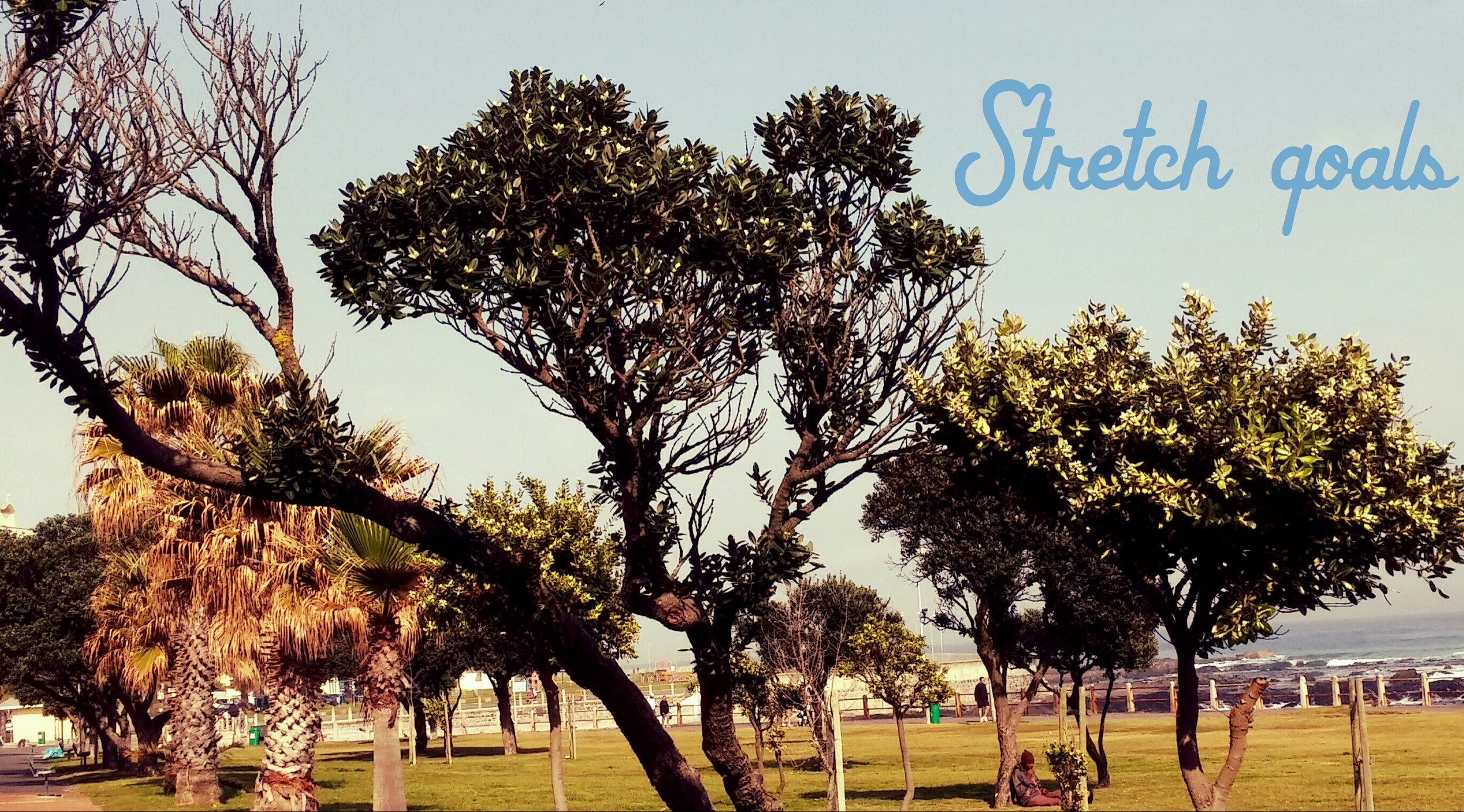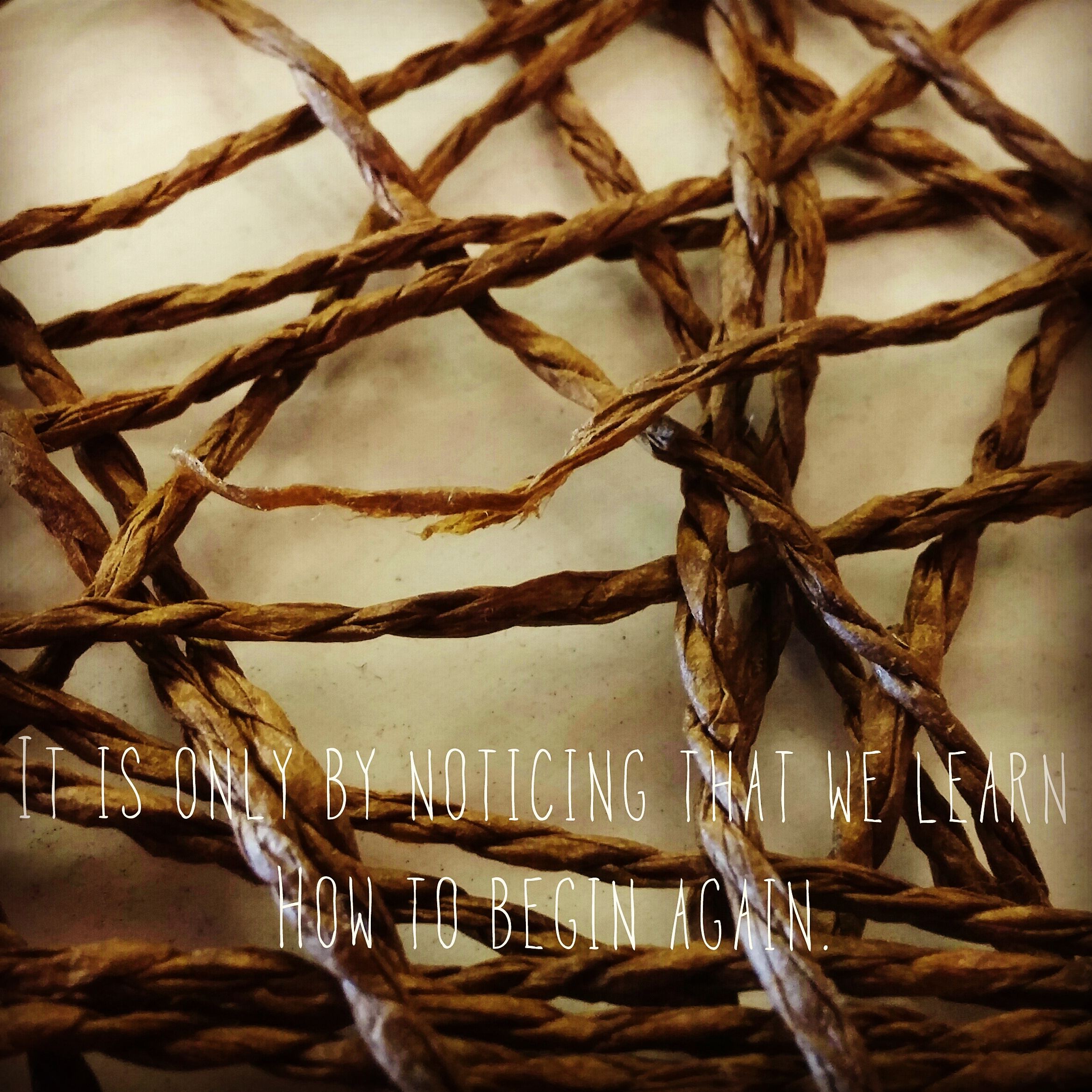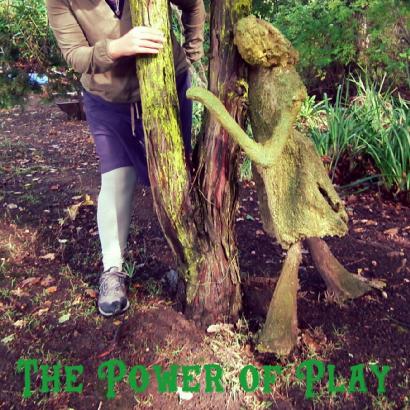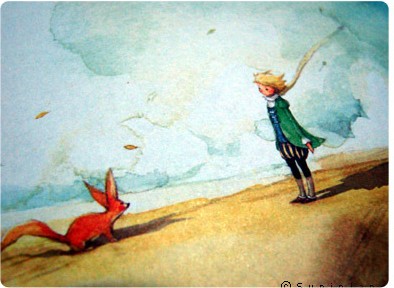Leading with PACE: Better Business Impact without the Burnout
 With news that South Africa faces a real slowdown in terms of economic growth for 2014 and forecast for even greater downward trends in 2015, the questions become, "How does one do more with less? How does one run a business which can create a better business impact without increasing the burnout of one's employees and one's self?"
There is a new model for leadership which addresses these things. It is called PACE based leadership. Its philosophical underpinnings are grounded in four new leadership practices which take into account the need to create greater traction with less resources. Leading with PACE focuses on Play, Agility, Curiosity and Energy to achieve this.
With news that South Africa faces a real slowdown in terms of economic growth for 2014 and forecast for even greater downward trends in 2015, the questions become, "How does one do more with less? How does one run a business which can create a better business impact without increasing the burnout of one's employees and one's self?"
There is a new model for leadership which addresses these things. It is called PACE based leadership. Its philosophical underpinnings are grounded in four new leadership practices which take into account the need to create greater traction with less resources. Leading with PACE focuses on Play, Agility, Curiosity and Energy to achieve this.
 When leaders adopt a playful mindset to the work which needs to get done, they become more comfortable in a world where boundaries aren't clearly defined and the landscape changes at a rate which is difficult to predict. It is not so much about building play activities into one's job. It is more about reminding oneself that when one is playful, we bring a sense of the present, of being mindful in the moment and a sense of focus to the work we are engaged in.
When leaders adopt a playful mindset to the work which needs to get done, they become more comfortable in a world where boundaries aren't clearly defined and the landscape changes at a rate which is difficult to predict. It is not so much about building play activities into one's job. It is more about reminding oneself that when one is playful, we bring a sense of the present, of being mindful in the moment and a sense of focus to the work we are engaged in.
There has always been a misguided comfort in the belief that the Business of Business is Business. Unfortunately this kind of thinking leaves one open to the very real danger of Overseriousness where work no longer feels like an adventure, where we start feeling cynical about the processes we are engaged in, disconnected from our colleagues, fueled with fatigue at what lies ahead and scared of taking risks and innovating beyond the known.
For Lego, the largest toy company in the world, when we adapt a playful approach, when we remember the joy of seeing work as play, as the place where we don't know the outcome of our endeavour, our attitudes change; we become more courageous and realigned to the work we do.
 Agility, the second part of the Pace based leadership model reminds us that being comfortable with changing course mid-direction is an important leadership quality to be able to call on. Apple is notorious for driving its professionals crazy for their constant mid directional changes. They are however changes which have built it into the most admired company, according to Forbes, in the world. Agile leaders are able to better mitigate their risks and hear the footsteps of the future approaching. Being agile, like being playful, is never just about one decision. It is an approach to leading.
Agility, the second part of the Pace based leadership model reminds us that being comfortable with changing course mid-direction is an important leadership quality to be able to call on. Apple is notorious for driving its professionals crazy for their constant mid directional changes. They are however changes which have built it into the most admired company, according to Forbes, in the world. Agile leaders are able to better mitigate their risks and hear the footsteps of the future approaching. Being agile, like being playful, is never just about one decision. It is an approach to leading.
Curiosity, the third piece to the PACE model of leadership, is an enabler of agile and playful practices. When we are curious, we notice other opportunities, we let go of our assumptions and make better commercial decisions; curious leaders are more able to rid themselves of dogma, prejudice and judgement. Being able to notice helps us to unlearn, to begin again in the middle, if need be.
 When we lead with PACE, we lead at a rate that feels resonant for each and every one of us. It requires that we change our mindset from focusing on the time we have available to the energy required to complete the task at hand.
When we lead with PACE, we lead at a rate that feels resonant for each and every one of us. It requires that we change our mindset from focusing on the time we have available to the energy required to complete the task at hand.
Leading with PACE gives us the tools to reframe our thinking, engage and connect meaningfully with others and avoid the burnout so often associated with trying to match the speed of the environment we are operating in. It provides counter tools to the traditional methods of control and command and enables leaders to reshape their leadership challenges with energy, ease and insight.
 Elaine Rumboll has developed a one day masterclass on Leading with PACE. The programme has been designed for organisations looking to generate a more meaningful impact through less resources, and to gain more traction through a more fulfilling way of leading and doing. For a detailed description of what the masterclass entails, download the pdf here.
Elaine Rumboll has developed a one day masterclass on Leading with PACE. The programme has been designed for organisations looking to generate a more meaningful impact through less resources, and to gain more traction through a more fulfilling way of leading and doing. For a detailed description of what the masterclass entails, download the pdf here.
What Curiosity Isn't
 Curiosity is increasingly being touted as a critical 21st leadership practice for business leaders. Curious leaders are able to better mitigate risk, more willing to be open to the diverse opinions of others, frame and reframe alternative perspectives when it comes to decision making. In short, curious leaders as able to better access their agility - so important for leaders today in a world where attempting to going faster than the rate of change has proven to be a fruitless and ineffectual practice.
In the charge to fuel organisations full of curiosity, certain assumptions have been made which I would like to challenge. I would like to delineate three things which are often incorrectly ascribed to the notion of Curiosity. Highlighting their importance will perhaps go some way in revealing why curiosity is an important trait to nurture in adults.
Curiosity is increasingly being touted as a critical 21st leadership practice for business leaders. Curious leaders are able to better mitigate risk, more willing to be open to the diverse opinions of others, frame and reframe alternative perspectives when it comes to decision making. In short, curious leaders as able to better access their agility - so important for leaders today in a world where attempting to going faster than the rate of change has proven to be a fruitless and ineffectual practice.
In the charge to fuel organisations full of curiosity, certain assumptions have been made which I would like to challenge. I would like to delineate three things which are often incorrectly ascribed to the notion of Curiosity. Highlighting their importance will perhaps go some way in revealing why curiosity is an important trait to nurture in adults.
Firstly,
Curiosity is not the same as Wonder Despite the importance of Curiosity as an impactful leadership practice in one's business strategic leadership armoury, many organisations have been wary of bringing curiosity into their company culture. The argument is that curious workers will become even more distracted then they currently are. This is based on the faulty assumption that wonder and curiosity are the same thing.
Embracing wonder is what will send one down a rabbit hole and spiral you into overload. Awe is about the general whilst Curiosity is always about the particular. Curiosity, according to George Loewenstein is what emerges when there is a mental object that exists out in the world that purports a different way of perceiving what your mental models states as the fact of a thing. When your mental model is disrupted, you have one of two choices. You can either suspend disbelief and become curious or you can reject the alternative out of hand and remain with your way of seeing and doing.
An example that I think clearly makes the point is the one which relates to bones in a human. If I were to give you two sets of numbers - 305 and 206 - perhaps the only thing you might find vaguely interesting is the fact that they both equal 8 if you had to do a calculation. But what if I gave you a context - what if I were to say to you that these are the number of bones in a child’s body and an adult's body? Then perhaps your curiosity might be piqued. Your mental model of the world has probably decided that when we are borne we are given a set of bones which remain unchanging over time unless there is an accident or operation. You could choose to dismiss this assertion and continue to operate in the world under your own assumption or you could ask, “Why?”. This questioning is curiosity in its essence. The answer is that bones fuse over time.
Curiosity is a critical lens to help focus our attention on that which we are disrupted by, and that which remains incongruent in terms of our world view. Curiosity is what causes us to challenge the way we see things and genuinely become interested in the opinions and views of others. It also helps us to see other possibilities. It is also a marker to challenge us when we rely, because of pressure of time, on the two or three models we have been taught to solve whatever problem is in front of us.
Curiosity is an Adult trait
According to Steven Dutch, children are tinkerers. It is worth quoting his insight in full: "The commonplace observation that children have short attention spans is direct refutation of the notion that they are creative and curious in any deep sense. The tragedy of our society is not that so many people outgrow their childlike curiosity, but that so few do. The adult equivalent of childlike curiosity is channel surfing and the ten-second sound bite". In order to be curious, one needs to have one's mental models disrupted within a context. Children spend their formative years building those models through repetition and tinkering. It is only once those mental models have been established that they can be disrupted. Far from the popular belief that Curiosity is steadfastly beaten out of us as children, it is as adults that we stop being curious once we have worldviews that we decide on and find more convenient not to have changed.
Curiosity didn't Kill the Cat
I cannot begin to count the times that people quip at me about cats when I speak about Curiosity. In fact Curiosity didn't kill the cat. The notion of Curiosity emerged etymologically in the 14th century as synonymous with Care. So when it is spoken of that Curiosity killed the cat, what is being referred to is Care, that too much care will smother things, the usage of a cat because it is one of the least interested of the animal kingdom in too much fussing.
To develop Curiosity as a practice, we need to accept responsibility for the fact that it is an adult trait, an appreciating asset that grows over time with use. It is your conscious role in seeking out things that disrupt your worldview through exploring other disciplines and insights that will challenge how you see the world and help you change it.
Negotiation Skills for Humans
 I have been teaching Negotiation skills for a number of years on two programmes at UCT GSB - Business Acumen for Artists and the Raymond Ackerman Academy, an emerging young entrepreneur programme. I have always used BATNA as a way to understand alternatives to negotiated agreements. The term which refers to ‘the Best Alternative to a Negotiated agreement’ was developed by Roger Fisher and William Ury and runs to this day as part of the Harvard University Negotiation skills offering.
More recently, however, I have been wanting to refresh my material on Negotiation Skills and find ways to include what I see as the three Cs of Leadership - Curiosity, Collaboration and Connection.
I have been teaching Negotiation skills for a number of years on two programmes at UCT GSB - Business Acumen for Artists and the Raymond Ackerman Academy, an emerging young entrepreneur programme. I have always used BATNA as a way to understand alternatives to negotiated agreements. The term which refers to ‘the Best Alternative to a Negotiated agreement’ was developed by Roger Fisher and William Ury and runs to this day as part of the Harvard University Negotiation skills offering.
More recently, however, I have been wanting to refresh my material on Negotiation Skills and find ways to include what I see as the three Cs of Leadership - Curiosity, Collaboration and Connection.
The clinical approach to Negotiations has always unsettled me a little. Generating alternatives seems rather solipsistic to me especially when you are never a party of one at a negotiation table. Notwithstanding, I do think that spending time thinking about what your best alternatives are to what you want is useful but not at the expense of the very real emotions that will be in the room.
In fact, according to Chris Voss, a recent FBI lead international kidnapping negotiator, in high stakes negotiations, the last things that comes to mind are logical choices for understanding the best alternatives.
Negotiations are emotional.
This seems to make sense especially when in a high stakes negotiation your best alternatives are 1) Murder 2) Surrender/Defeat 3) Suicide 4) Escape. Your limbic brain, the one driven by WHY is what drives decision making and decides on action. It is therefore of critical importance that when we negotiate we understand the emotional factors as these are what will drive behaviour.
To pretend that emotions don’t exist in negotiations is to lose sight of the fact that ultimately, what we decide on, is what we care about. For Voss, people “spend a lot of time calculating their BATNA, when they should be spending time figuring out how to influence the other side. And how to figure out how to listen to them effectively to find out what will influence them”.
To be successful, you need to understand that it is another human being, not a machine on the other side, build trust and the sense of a connection. What he also highlights is that so much time is spent planning and preparing one’s own argument that one forgets to really listen to the other side. “They don’t pay attention to emotions and they don’t listen”.
In a world where the questions are more important than the answers, when listening is often more effective than talking, isn’t it time we started using these insights in the work we do with others, that we bring our humanity to the work we do.
One of the best pieces of advice I ever received from someone who I thought was an incredible negotiator and did so for Johnson & Johnson on a regular global basis was this piece of advice: “Keep the other person whole”. Regardless of what it is you need to achieve attacks ad hominem are futile but more importantly, failing to establish a connection and not listening intently to the other side puts you at risk of a botched negotiation
We need the understanding that it is connectedness which will drive better human negotiations. Using this ‘connectedness’, the sense of wanting to develop a shared basis of trust and deep listening when we go through times that require negotiation, can only but be a benefit.
Play as a Design Tool for Leadership Development
 It has been shown in Australian business that only 58% goes on work that adds “real value” to organisations, with the inefficiencies costing business $109 billion in wages every year.
The figures are, I have no doubt, similar in South Africa. In fact, according to the World Competitiveness Yearbook (2012), South Africa is rated 50 amongst 59 countries. When more than half of our time is spent on solving the wrong problem, surely it is time to try a different methodology?
It has been shown in Australian business that only 58% goes on work that adds “real value” to organisations, with the inefficiencies costing business $109 billion in wages every year.
The figures are, I have no doubt, similar in South Africa. In fact, according to the World Competitiveness Yearbook (2012), South Africa is rated 50 amongst 59 countries. When more than half of our time is spent on solving the wrong problem, surely it is time to try a different methodology?
It is frequently the case that in instructional design, a ‘red thread’ or programme director is used as the touchstone of meaning making in an organisational or leadership development process. Although this a fair way to increase the sensemaking and to develop the emergent outcomes (outcomes that only begin to appear once processes and conversations have begun), it is not enough to ensure we are focusing on the right problems.
I am currently in the middle of a MOOC on Creative Learning being run by MIT and there is an insight which I want to share. Mitchel Resnick argues that the pattern of learning in Kindergarten children are ideally suited to the needs of the 21st century.
The process that he has observed in children when they learn involves six moments: 1) Imagine 2) Create 3) Play 4) Share 5) Reflect 6) Imagine (again)
With my interest in Curiosity as a critical leadership development tool and the knowledge that we often focus on the wrong problems, I decided to experiment with his insights and used this process as a basis for the design of a one day Leadership Masterclass on Agility. I have just run it in Melbourne, Australia. Here is an example of one of the sessions in the day using Play as a design tool, matching exercises I would otherwise have run in a different order now in the structure of Play:
Imagine: X BELIEVES THE WORLD WOULD BE A BETTER PLACE IF... Create: CHOOSING THE RIGHT PROBLEM TO WORK ON Play: SPEEDBOAT CHALLENGE Share: POWERFUL QUESTIONS Reflect: CHOOSE ONE TO WORK ON AND WHY Imagine: IF YOU COULD CHANGE YOUR LIMITING BELIEFS WHAT WOULD BE DIFFERENT - WALKING THINKING PARTNERSHIP
What felt different from this workshop to any other I had run was the investment by the participants and the amount of laughter it generated. Kindergarten kids laugh 250 times a day. Middle aged people laugh 15 times a day. We spend so much time trying to do everything and doing it faster and not enough time laughing, reflecting, enjoying, and focusing on the important. However, it was not only laughter it generated. Using Play as the basis for a structure really helped us get to the nub of some of the complex issues in a way which did not feel fearful. Instead it generated a depth and a focus for tackling serious problems that felt had ease and congruence.
From the experience of using Play as a design tool, it is my contention that PLAY has a profoundly important role to play when it comes to identifying, tackling and solving 21st Century problems in the world of Business, Government and Education.
The Gratitude for Fathers
 My blog over the last six years has mainly been about sharing wisdom from the world of work and insights from those environments. This post is a little different. It is about acknowledgement and connection - things I am beginning to realise are far more important in leadership development than pontificating. I have left secure jobs often over the years - for many reasons - mainly because I have been passionate about pursuing new things. It is the one year anniversary of my own business. I want to write this post today in gratitude of my father. He taught me when I was very little about the Fox and the Little Prince - made me believe very deeply in the idea that you are responsible for what you tame. I have worked in prisons, with young people in care, with accelerating those in disadvantaged positions for leadership roles, those in the advantaged for even greater heights. I am passionate about Curiosity and Agility, about Bravery and Courage. It has defined the work I do and the work I have stopped doing. My father doesn't have legs. He lost them both to Diabetes. But he continues to drive my belief in myself - sometimes when running your own business isn't easy, when you worry more about money than ideas. I want to thank him for always making me remember that Education is about teaching people how to think, not what to think. It has informed everything I do. When I was 21, he read me a poem by J.P. Cavafy.
Ithaka
My blog over the last six years has mainly been about sharing wisdom from the world of work and insights from those environments. This post is a little different. It is about acknowledgement and connection - things I am beginning to realise are far more important in leadership development than pontificating. I have left secure jobs often over the years - for many reasons - mainly because I have been passionate about pursuing new things. It is the one year anniversary of my own business. I want to write this post today in gratitude of my father. He taught me when I was very little about the Fox and the Little Prince - made me believe very deeply in the idea that you are responsible for what you tame. I have worked in prisons, with young people in care, with accelerating those in disadvantaged positions for leadership roles, those in the advantaged for even greater heights. I am passionate about Curiosity and Agility, about Bravery and Courage. It has defined the work I do and the work I have stopped doing. My father doesn't have legs. He lost them both to Diabetes. But he continues to drive my belief in myself - sometimes when running your own business isn't easy, when you worry more about money than ideas. I want to thank him for always making me remember that Education is about teaching people how to think, not what to think. It has informed everything I do. When I was 21, he read me a poem by J.P. Cavafy.
Ithaka
As you set out for Ithaka Hope your journey is a long one Full of adventure, full of discovery. Laistrygonians, Cyclops Angry Poseidon – don’t be afraid of them: You’ll never find things like that on your way As long as you keep your thoughts raised high, As long as a rare sensation touches your spirit and your body.
Laistrygonians, Cyclops, Wild Poseidon – you won’t encounter them Unless you bring them along inside of your soul Unless your soul sets them up in front of you.
Hope your road is a long one. May there be many summer mornings when, With what pleasure, what joy, You enter harbours seen for the first time; May you stop at Phoenician trading stations To buy fine things Mother of pearl and coral, amber and ebony, Sensual perfumes of very kind- As many sensual perfumes as you can; And may you visit many Egyptian cities To learn and to go on learning From those who do know.
Keep Ithaka always in your mind. Arriving there is what you are destined for. But don’t hurry the journey at all. Better if it lasts for years. So you’re old by the time you reach the island, Wealthy with all you will have gained on the way. Not expecting Ithaka to make you rich.
Ithaka gave you the Marvellous journey. Without her you wouldn’t have set out. She has nothing left to give you now. And if you find her poor, Ithaka won’t have fooled you. Wise as you will have become, so full of experience, You’ll have understood by then what these Ithakas mean.
JP Cavafy
It informs my life till today. I did not understand at that time what it could mean to disappoint. I understand now that perceptions of disappointment come from many different places; from the context and the history every person brings to the understanding of their current experience. There is no one person who has a net wide enough to hold everyone. It has taken me decades to separate out my stuff from other people's stuff. But your wisdom has held me for over forty years, Daddy.
Thank you, Professor Frank Cecil Henley Rumboll. You rock my world.




